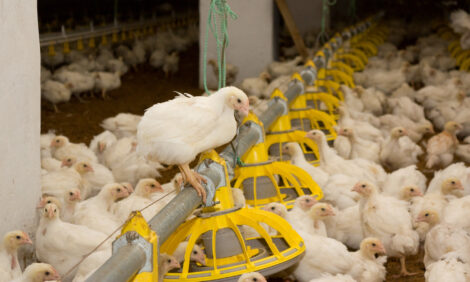



Indian Egg-layers Escape the Cage
INDIA - An Indian egg producer has come under a shower of praise this week for being the first ever to label its eggs as 'cage-free'. |
| In India, factory farms that confine more than 50,000 birds within a single shed are increasingly common. Photo: StockXchange |
The Humane Society International, an animal protection organisation with more than 10.5 million supporters has been quick to point out the recent welfare friendly actions taken by Keggs Farms.
‘Cage-free’ eggs come from hens that move about freely within a shed. Since, its inception in 1967, Kegg Farms has never kept its flocks in cages.
“For me it is not a question of economics, it is an expression of my personal values and beliefs,” said Vinod Kapur, founder and CEO of Kegg Farms. Kapur calls his cage-free system ‘infinitely more compassionate’, than the more common battery cage system.
HSI has launched a campaign against the use of battery cages in India, citing the cruelty inherent in keeping animals confined in such a small and tightly packed space. HSI urges consumers to avoid purchasing or consuming battery-cage eggs. However, until now, it has been difficult for consumers to know the difference between battery-cage and cage-free eggs, as both were identical in appearance. By labeling their eggs as cage-free, Kegg Farms provides egg consumers with the information they need to make the better choice.
Kegg Farms’ cage-free eggs are sold under the brand name, ‘Keggs’, and are available at supermarkets in the Delhi/Gurgaon area. The first eggs with the cage-free labels reached the store shelves earlier this year.
Facts
- India’s factory farms confine more than 100 million hens in barren battery cages. Each bird lives within a space smaller than a single sheet of paper for more than a year before she’s slaughtered.
- In India, factory farms that confine more than 50,000 birds within a single shed are increasingly common.
- While cage-free does not mean cruelty-free, cage-free hens generally have 250 per cent to 300 per cent more space per bird and are able to act more naturally than caged hens. Cage-free hens may not be able to go outside, but they are able to walk, spread their wings and lay their eggs in nests — all behaviours denied to hens confined in battery cages.








